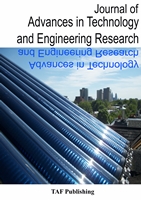
|
Published online: 2017
Abstract
The seat structure of the Sports Utility Vehicle (SUV) has gained more attention in developing lightweight design using available materials different in grades and their strengths. The SUV industry has drastically shown an incessant growth in the present. By this scenario, safety issues are of interest mainly for the users. This work, therefore, simulates and analyzes an SUV’s seat for stress distribution and deformation of its structure using finite element method. The seat is situated in the SUV where it is crashed in the front by oblique angle from 0 degree to 15 degrees adjacent to the straight direction in both right and left sides. This type of collision is considered to be an accident of vehicle resulting in serious injuries. The analysis employs an explicit dynamic simulation during the real frontal impact and includes a direct contact of Asia-EvaRID (ER) model with the backrest. Under the test by simulation conforming to the industrial standards, ECE standards in particular, the seat structure parts of the backrest relative to the sled were measured in displacement of deformation with a minimum interval time of accident, for the velocity ranging from 60 km/h to 100 km/h. The results have explored that the seat structure withstanding the stress distribution and deformation under static load evaluation testing was affected by vehicle velocity and crash direction in an accident. The analysis of the left and right side impact when fastened seat belt generated the maximum stress in the direction of 12.85 degrees head and 6.04 degrees chest from the lateral axis and 4.28 degrees head and 2.01 degrees chest from the lateral axis, respectively. The unfastened seat belt case has shown the maximum distribution at 9 degrees head and degree chest directions over the peak time. |